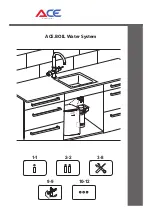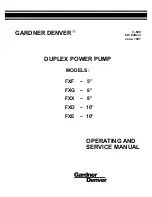
9
7. Lubrication
Caution
1. Do not lubrication.
8. Caution on Handling
Warning
1. Test before using with the actual equipment.
Test the pump before using it with the actual equipment. Even if there is no problem in a
short-term test, the liquid may penetrate through the fluoropolymer diaphragm causing
malfunction in the pump air circuit.
2. Storage
In the case of long-term storage after use, first thoroughly remove the liquid, and clean and dry
the inside to prevent deterioration of the pump materials.
3. After a long period of non-use, perform a trial run prior to operation.
4. Ensure that the bolts are not loose before operating the process pump. Retighten if
necessary.
5. Discharge volume adjustment
Always connect the discharge volume adjustment valve to the FLUID OUT of the process pump.
Adjust the volume by operating the valve.
6. When the discharge volume is large (flow speed is high), depending on the fluid type
and operating conditions, there will be cavitation, leading to a poor operation or
malfunction. Decrease supply air pressure or decrease the discharge volume with a
throttle so that cavitation is not generated.
7. Operating invironment
When dangerous fluid is used, take measures to isolate humans from the pump. External leakage
of transferred liquid could cause serious injury.
8. External leakgage of transferred liquid
There are some cases where the operating fluid will leak outside the pump, for example when
thediaphragm reaches the end of its life. Depending on the operating fluid, take measures
against external leakage, including installing a drain pan, to avoid adverse effects on humans and
equipment.
9. Caution for piping of the tube
Support the piping according to JIS B 8370 when piping the tube. Ensure that tensile force is not
applied to the tube.
。





































